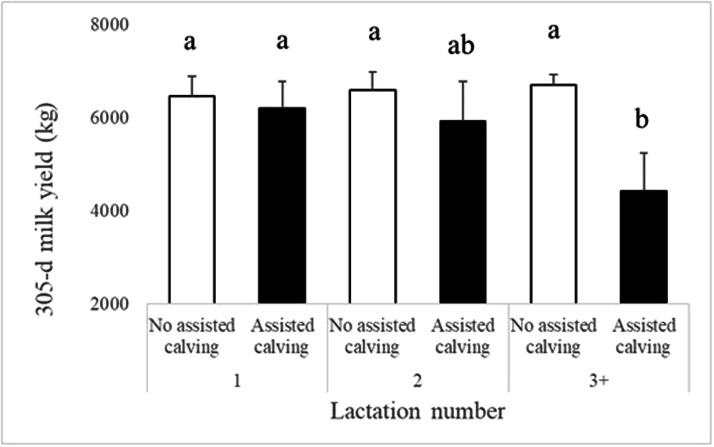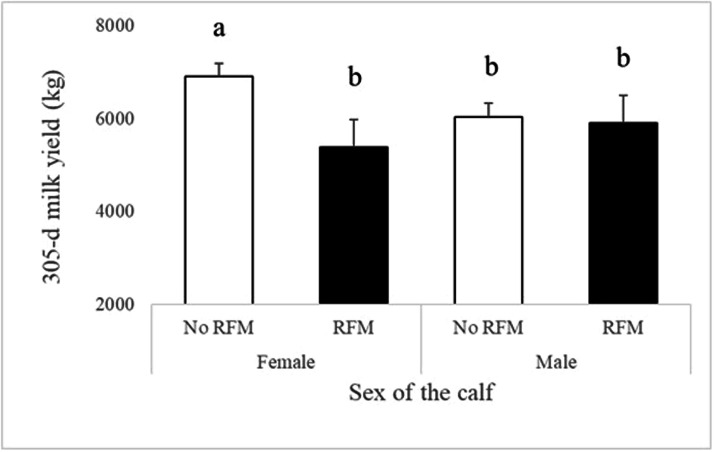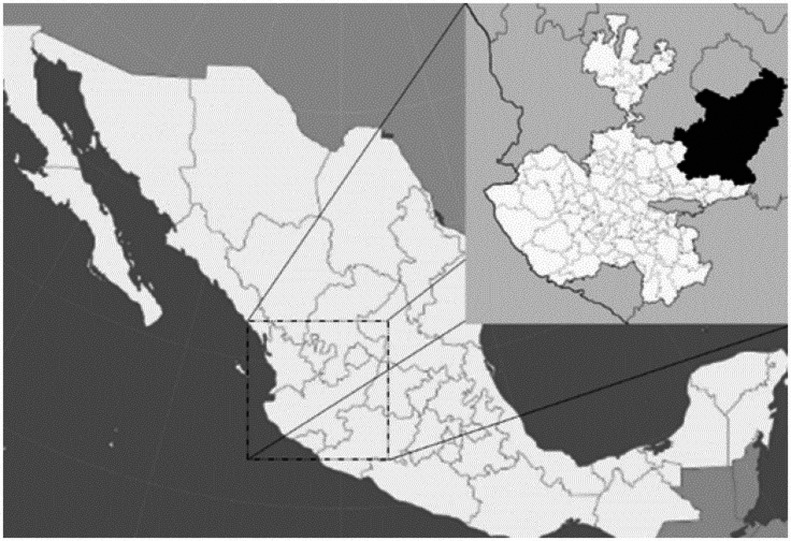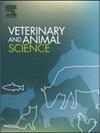辅助产犊和保留胎膜对小农体系产奶量的影响。
IF 1.9
Q2 AGRICULTURE, DAIRY & ANIMAL SCIENCE
引用次数: 0
摘要
辅助产犊、保留胎膜(RFM)和小牛性别对小规模乳品系统产奶量的影响尚不清楚。本研究利用来自23个农场的279份18个月的泌乳记录,评估了它们对泌乳早期产奶量和305天标准化产奶量(305MY)的影响。分析的变量包括辅助产犊、RFM、小牛性别和泌乳次数,以30天产奶量和305天产奶量为响应变量。采用一般线性模型进行统计学分析,P < 0.05为显著性,P < 0.1为趋势。泌乳量显著影响泌乳早期产奶量(P = 0.023), RFM有显著趋势(P = 0.078)。未添加RFM的奶牛产奶量为21.8±0.8 kg/d,添加RFM的奶牛产奶量为18.6±1.7 kg/d。辅助产犊显著影响305MY (P < 0.05),不需要辅助的奶牛产奶量高于需要辅助的奶牛。辅助产犊与泌乳次数(P = 0.099)、RFM与犊牛性别(P = 0.060)之间的交互作用接近显著。在不需要辅助产犊的奶牛中,基于泌乳次数的305MY无显著差异(P≥0.05)。然而,在需要辅助产犊的奶牛中,第一次和第三次或更高的泌乳奶牛的305MY差异显著(P < 0.05),第二次泌乳奶牛的平均值为平均值。此外,与有RFM的奶牛或有RFM或没有RFM的奶牛相比,没有RFM的奶牛产下雌性小牛的305MY更高。综上所述,RFM可使泌乳早期产奶量减少约3.2 kg/天,并使产犊影响减少约1,069 kg/天。本文章由计算机程序翻译,如有差异,请以英文原文为准。



Effects of assisted calving and retained fetal membranes on milk production in the smallholder farming system
The impact of assisted calving, retained fetal membranes (RFM) and calf sex on milk production in small-scale dairy systems remains unknown. This study evaluated their impact on early lactation milk production and standardized 305-day yield (305MY) using 279 lactation records from 23 farms over 18 months. Variables analyzed included assisted calving, RFM, calf sex, and lactation number, with milk production at 30 days and 305MY as response variables. General Linear Models were used for statistical analysis, with significance at P < 0.05, and trends at P < 0.1. Lactation number significantly affected early lactation milk production (P = 0.023), with RFM showing a trend toward significance (P = 0.078). Cows without RFM produced 21.8 ± 0.8 kg/day, while those with RFM produced 18.6 ± 1.7 kg/day. Assisted calving significantly affected 305MY (P < 0.05), with cows not requiring assistance having higher yields compared to those needing assistance. Interactions between assisted calving and lactation number (P = 0.099), as well as RFM and calf sex (P = 0.060), approached significance. In cows that did not require assisted calving, no significant differences in 305MY were found based on lactation number (P ≥ 0.05). However, in cows that required assisted calving, significant differences in 305MY (P < 0.05) were observed between first and third or higher lactations, with second-lactation cows having average values. Additionally, cows without RFM that gave birth to female calves had higher 305MY compared to cows with RFM or those that gave birth to male calves with RFM or without RFM. In conclusion, RFM reduces early lactation milk production by approximately 3.2 kg/day, and assisted calving impacts 305MY by about 1,069 kg/lactation.
求助全文
通过发布文献求助,成功后即可免费获取论文全文。
去求助
来源期刊

Veterinary and Animal Science
Veterinary-Veterinary (all)
CiteScore
3.50
自引率
0.00%
发文量
43
审稿时长
47 days
 求助内容:
求助内容: 应助结果提醒方式:
应助结果提醒方式:


